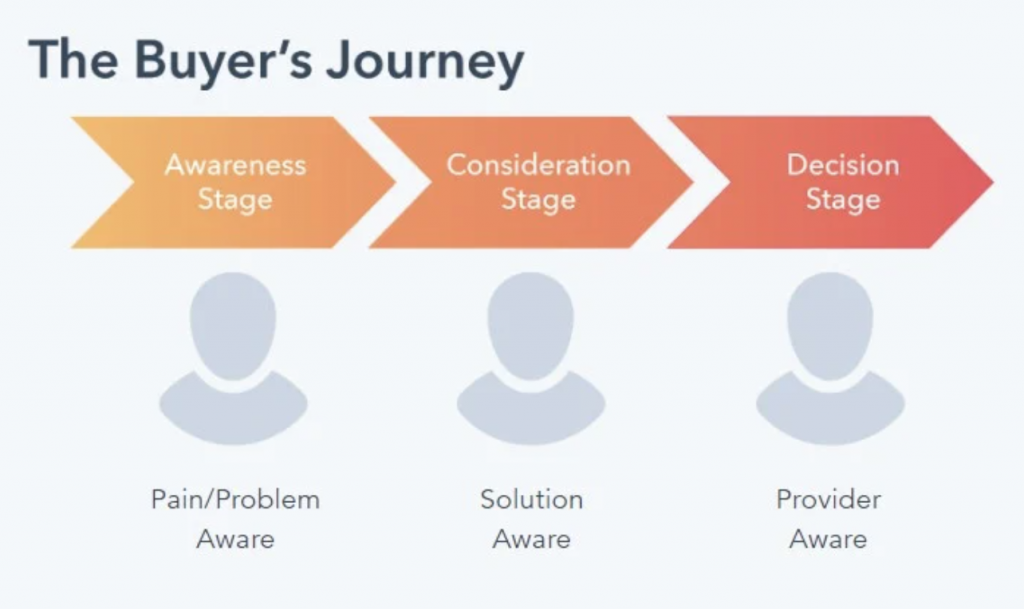
Demand generation vs lead generation. Many marketers use these terms interchangeably because of their similar traits. However, the goals, tactics, and approaches to both lead and demand generation are quite different. Both concepts have a crucial role in any B2B marketing strategy and understanding the fundamental differences between them is important. Leveraging them together and effectively translating demand into qualified leads can accelerate your growth and potentially reduce your CAC.
In this article, we’ll take a look at the main differences between demand and lead generation and discuss how using them together can help you create an effective marketing strategy.
For the longest time, companies have been using lead generation as a metric to gauge their marketing performance. Marketing professionals are always under a lot of pressure to increase more qualified leads through different marketing channels. However, the digital marketing sphere has changed. Customers want more control of their buying process and dislike being pushed to sales before they are ready. Just like the B2C model, modern B2B customers expect to have all the information before they decide to buy anything.
Most marketing departments have yet to recognize this change and continue to operate as before. As a result, there’s been a noticeable drop in overall B2B conversion rates for many businesses. Today, about 80% of marketers rate their lead generation effects as slightly or somewhat effective.
Sales teams get increasingly frustrated from the lack of quality leads and think that marketing is wasting both time and resources. Consequently, the departmental divide and lack of direction further deteriorates the customer experience and ultimately hurts the business.
Optimizing the buying experience and nurturing potential customers through proven demand generation techniques is the only way forward for modern businesses. Changing their approach to a targeted, and more personalized model can make things significantly better. This approach allows businesses to generate more high-quality leads at a lower cost and increase their overall revenue with consistent sales.

Many make the mistake of grouping demand and lead generation together and thinking of them as similar concepts. However, that’s wrong. Both frameworks have separate aims and use different methods of leveraging content to meet them. Lead generation is a single tactic to obtain more contacts of potential customers while demand generation is a complete buyer’s journey funnel that focuses on building authority and creating awareness through engaging content.
Primarily, the lead generation process is designed to maximize the number of leads and reduce the overall cost per lead. It captures contact info through gated content and passes out that info to the sales team. On the other hand, demand generation considers the big picture and focuses on measuring different metrics until closing the deal. This approach distributes content freely and creates engagement with the prospects. Demand generation requires detailed attention to every step of the buyer’s journey in order to create a comprehensive nurturing process. The results of which are genuinely qualified leads that produce better conversion rates and sales.
Another prominent difference between lead and demand generation frameworks is the involvement of the sales team. The lead generation process is purely a marketing effort with little to no involvement from sales and other departments. Contrarily demand generation is a combined effort. Both marketing and sales work together in an ongoing effort to facilitate customers and streamline the entire buyer journey.
After understanding the key differences between demand and lead generation, you’ll naturally want to learn more about the method of integrating them into your strategy. What is inbound marketing’s role in demand generation? How do you implement demand generation in your company? How do you build a demand generation plan? All of these are important questions that any marketing professionals starting with demand generation would ask.
We, at StepUp, have come up with an infallible and easy-to-implement formula that can work for any B2B marketing environment. We call it the Demand Generation Framework.
The demand generation framework stands on 5 pillars starting from customer profiling to the very end of the marketing funnel. Let’s take a brief look at it now!

As a marketer, you’ll need to deal with the inherent duality of trying to make your business scalable whilst niching down to attract more sales and traction in your target market. An ideal customer profile (ICP) is a perfect tool that makes it easier for you to get those sales by first focusing on customers that are excited, ready, and willing to buy your product. Your ICP doesn’t have to be a real company. As its name suggests, it’s an ideal organization that checks all the boxes when it comes to the kind of company your product/solution is suitable for.
Generally, there are numerous factors you’ll need to consider while making an ideal customer profile. Your selection process will evolve over time and the list can get exhaustive. The more details you add, the easier it will be for your sales team to qualify or reject a lead. If you haven’t done this before, setting up an ideal profile by focusing on the following 6 aspects is a great starting point.
Modern buyers do not want to deal with a traditional marketing department that pushes them along different stages. They instead want to become aware of the current solution, consider all the benefits, and then finally decide to purchase at their own pace. It’s a three-stage process and requires you to present information about your product/service to help the buyer reach a decision.

Demand generation requires you to create appropriate strategies to facilitate, not direct the buyer’s journey. Mapping out the expected journey will also help you streamline the process and make sure that you won’t be losing out on any opportunities to capitalize.
One thing is always constant in any marketing approach you adopt, and that is the importance of content. You’ll need to create engaging content that adds value to the buyer and moves them along the journey.
You’ll have to plan and execute multiple content strategies for each stage of the buyer’s journey. Every piece must also have some conversion points to help the potential client contact you for more information or anything else. You’ll also need to ensure that your content covers all the media channels your targeted customers frequent as a multi-channel approach yields better and faster results by solidifying your brand authority.
 You may have different departments for certain jobs, but your customer is dealing with a single entity and expects a streamlined process. To ensure that, you must align the priorities of your marketing and sales department and ensure a smooth and timely process. The customers control the pace in demand generation models, but they also expect to get quick answers whenever they initiate contact. Through a well-defined lead handoff process, you can ensure a smooth and consistent process for all your customers.
You may have different departments for certain jobs, but your customer is dealing with a single entity and expects a streamlined process. To ensure that, you must align the priorities of your marketing and sales department and ensure a smooth and timely process. The customers control the pace in demand generation models, but they also expect to get quick answers whenever they initiate contact. Through a well-defined lead handoff process, you can ensure a smooth and consistent process for all your customers.
Advanced CRM tools and data analytics has completely changed the marketing landscape. Businesses now have access to multi-channel data streams that track the customer’s journey and can create dynamic strategies with marketing and sales automation tools. If you are still not leveraging data analytics and modern tools for your marketing campaigns, you are probably behind your competition and might need to overhaul your processes.
Modern marketing has changed. According to a survey, 70% of B2B marketing professionals believe that the quality of the lead is more important than quantity. Demand generation is the proven methodology of attaining that quality.
Today, numerous top-tier marketing companies use demand generation to guide their customers throughout their marketing journeys till the closed deal. Implementing demand generation in your team is easier than you think. The best part is that StepUp can help you improve your chances of success. Our demand generation framework, along with other customized solutions, can help you successfully navigate the modern marketing environment and increase your revenue pipeline in the most efficient manner.
Want to experience the power of demand generation on your company? Schedule a Free customized Demo Session to see how demand generation can work for your company, and get tips and analysis on your website, competitors, and market.